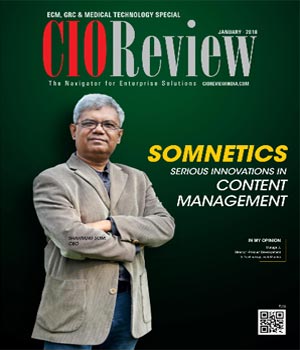
Managing & Developing GICs in India
Vijay Ratnaparkhe, Managing Director and President, Robert Bosch Engineering and Business Solutions Limited | Wednesday, 18 June 2014, 04:48 IST
 Bosch Limited (NSE:BOSCHLTD) (BSE:500530) is a pioneer supplier of technology and services in the areas of automotive and industrial technology, consumer goods and building technology. The company currently has a market cap of Rs.32,720.79 crore.
Bosch Limited (NSE:BOSCHLTD) (BSE:500530) is a pioneer supplier of technology and services in the areas of automotive and industrial technology, consumer goods and building technology. The company currently has a market cap of Rs.32,720.79 crore.
India is a most sought-after destination of Global In-house Centres (GICs). NASSCOM data says that as of end 2013, India is slated to have more than 750 captives and the world’s six largest software corporations employ around 20 percent of the workforce in India. Today, India is a leader in the global outsourcing landscape with 52 percent share in the global outsourcing market.
In the 90s, organizations setup the GICs which later on went ahead and attracted other third-party units to begin their operations in India. These third-party units, in turn, roped in big customers during the times of recession in western market. With good business at hand and benefits like cost effectiveness and talent availability at hand, more and more companies started establishing their presence in India.
Today, we have not only GICs entering the R&D foray in India but also the local Indian players have grown big and have their own R&D facilities with huge investments and revenues.
Out of the hundreds of captives or GICs in India, only few have managed to grow in a bigger way, operating today as a second largest development centres outside of the parent country. Today, what we refer to as GICs are organizations which have their established origin at a location in another country (mostly in a developed country) and as a part of their globalization campaign and to expand their operations, they have their units in India.
In my opinion, there are a few criteria which would enable a GIC to grow, along with providing the required services to the parent company. Identification of the right vision and strategy forms the critical criteria of this aspect. A good and a well-directed vision will help look at different strategies for growth. Vision would enable the organization to guide the employees to work towards it.
Once a GIC enters the mature phase, unless it continuously looks at a new strategy, it is bound to move into a slow phase leading to a decline. To avoid this, the captives must work towards getting the buy-in and visibility from the board of management of the parent company to get more value-based and complex project management capability-based projects into the portfolio. This, on one hand, would help the captive to showcase the capabilities and on the other hand would help in retaining the core and critical talent with higher responsibilities. This would additionally help the GIC to develop the expertise required to work on projects/programs identified as high value by the parent organization.
Going further, the organization also needs to look at diversifying its portfolio into new areas to earn net new revenue for the GIC. Global business and non-linear business are two important streams which the organizations need to look at to enhance their portfolio. This also means adapting the organization structure to handle the global business scenarios. Planning and reassessing the situation periodically is mandatory to ensure that the plan is in the right direction.
Innovation is another area which an organization should concentrate on, to develop individuals for ideation for new or improved ideas for products as well as processes. Revenue through IP in a long term is important for the growth of any organization in terms of value and people. Avenues for conceptualization and productization of ideas play an important role to motivate people and get ahead in business.
Finally, as a captive, organizations need to work on products and services for the local markets in line with the mantra “Local-for-local”. This becomes the key for sustenance and success of the GIC.
CIO Viewpoint
By Aliasgar Bohari, Director IT, ZULEKHA HOSPITAL
Focus on the People Aspect will take the...
By Sanjeev Jain, VP of Information Technology, Integreon
Cloud Computing for Affordable Medicines
By Manoj Shah, VP IT, Amneal Pharmaceuticals
CXO Insights
The IoT Revolution in IVD Industry
By YS Prabhakar CEO, Transasia Bio-Medicals
When the Internet of Things met Analytics
By Salil Godika, Chief Strategy & Marketing Officer, Happiest Minds Technologies
The Use of Technology in the Field of Clinical...







